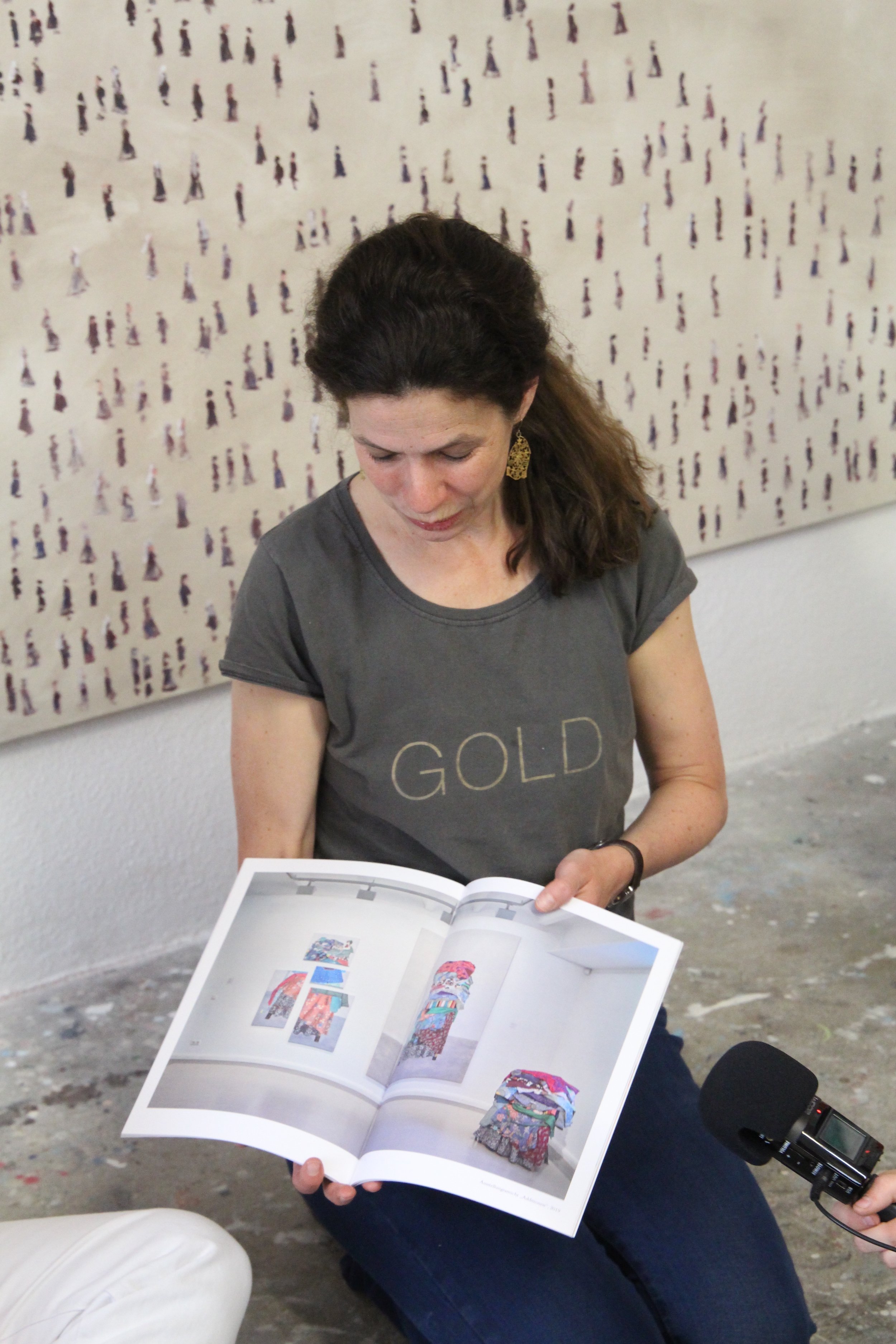In the reality factory of Lilla von Puttkamer
Lilla von Puttkamer’s studio is a real treasure chest: The floor glows with splashes of color; the walls are full of pictures; there are homemade machines that make sounds; a two-dimensional chandelier made of wood hangs from the ceiling and we discover all kinds of household objects, paints, paintbrushes as well as telephones and other everyday objects made of clay.
Not everything we see here is by Lilla herself – we quickly find out that the music machines are by Albert Fersch, whom another ‘Ephra unterwegs’ group has also visited. Albrecht is Lilla’s partner, with whom she shares the studio and also sometimes collaborates. (Then they call themselves “The Geopoets.”) Lilla really enjoys making art together with other artists. Often she is inspired by other people and friends to create works. For example, on the wall there is a big picture of a chair that is almost completely covered by a painted mountain of clothes. The mountain of clothes really exists and belongs to a person Lilla knows.
Lilla likes to paint clothes because fabrics can tell many stories – personal stories or cultural traditions woven into patterns and colors. Also, clothes are worn by people as a shell with which they can express themselves, but also hide behind.
When Lilla exhibits this painting, she borrows the clothes and arranges them on the chair just as she did in the painting. Original and likeness are then shown side by side. In the process, it’s not really possible to say what is actually the original and what is the copy: after all, the mountain of clothes is the starting point of the picture and the picture is the starting point of the mountain of clothes. Lilla thinks this is great, because the question of what is “real” is very often not so easy to answer.
What’s also special about Lilla’s painting is that it often doesn’t (only) hang on the wall as a picture, but also reaches into the room – for example, through the “real” mountain of clothes on the chair that belongs to the painting. She also sometimes paints objects on wood and then saws them out, like the chandelier hanging from the studio ceiling that reminds us of a prop or theater set. It seems a bit like Lilla is painting the world as she pleases!
We feel like it, too, and are allowed to try out a very special painting technique ourselves: Lilla beats eggs into small bowls and we add colorful pigments, that is, colors in dry powder form. On small pallets we mix the pigments with the beaten egg and can paint in bright colors whatever comes to mind. At the end, we lay it all out. One child still likes the blobs of color on the studio floor best of all. Someone else has painted a T-shirt with a dinosaur on his paper. We think it’s so cool that we’d love to slip into it right away. Of course, it’s only on paper and too small to wear. (Lilla’s chandelier can’t really be turned on, either.) But the nice thing is that art can help us dream things up and try them out. Sometimes it gives us ideas about how reality can be shaped. The dino shirt is definitely in the works now. As we say goodbye to Lilla and the sun falls through the open studio door, it seems as if the painted crystals of the chandelier sparkle as if they were really made of glass.







